Tarn Taran Sahib is a historical Sikh pilgrimage site located in the Tarn Taran district of Punjab, India. The city gets its name from the Sarovar (holy pool) that surrounds the Gurdwara Sri Tarn Taran Sahib.
The history of Tarn Taran Sahib dates back to the 16th century when the third Sikh Guru, Guru Amar Das Ji, dug a large holy pool at the site where the Gurdwara now stands. The fourth Sikh Guru, Guru Ram Das Ji, later added a Gurdwara to the site.
In the 18th century, the Gurdwara was destroyed by Afghan invaders. It was later rebuilt by Maharaja Ranjit Singh in the early 19th century, and he also built several other structures around the holy pool.
During the Indian independence movement, Tarn Taran Sahib played an important role in the political and social activities of the Sikh community. In 1920, the Akali movement was launched from Tarn Taran Sahib, which aimed to free the Gurdwaras from the control of the British Government and return them to the Sikh community.
Importance of Tarn Taran Sahib in Sikhism
Tarn Taran Sahib holds great significance in Sikhism, and it is considered one of the most important pilgrimage sites for Sikhs. Here are some reasons why:
- Historical Significance: Tarn Taran Sahib has historical significance as it is connected to the Sikh Gurus. The third Sikh Guru, Guru Amar Das Ji, dug the holy pool at the site where the Gurdwara now stands. The fourth Sikh Guru, Guru Ram Das Ji, later added a Gurdwara to the site. Several other Sikh Gurus also visited Tarn Taran Sahib during their lifetime.
- Spiritual Significance: Tarn Taran Sahib holds spiritual significance for Sikhs. The Sarovar (holy pool) surrounding the Gurdwara is believed to have healing properties, and pilgrims come to bathe in the holy waters to seek spiritual and physical healing.
- Cultural Significance: Tarn Taran Sahib is an important cultural site for Sikhs. It has been the site of many Sikh political and social activities, including the Akali movement launched from there in 1920. Tarn Taran Sahib is also the birthplace of Bhai Mani Singh, a prominent Sikh scholar and martyr.
- Architectural Significance: The Gurdwara Sri Tarn Taran Sahib is a beautiful example of Sikh architecture. The complex includes several impressive buildings, including the Darbar Sahib, the langar hall, and the clock tower.
- Festivals and Celebrations: Tarn Taran Sahib is home to several annual festivals and celebrations that are important to the Sikh community, including Guru Nanak Dev Ji’s birthday, Vaisakhi, and Diwali. These festivals bring thousands of pilgrims to Tarn Taran Sahib every year.
Establishment of Tarn Taran Sahib
Tarn Taran Sahib was established in the 16th century by the third Sikh Guru, Guru Amar Das Ji. He dug a large holy pool at the site, which is now surrounded by the Gurdwara Sri Tarn Taran Sahib. The holy pool is believed to have healing properties, and it is considered one of the most sacred sites in Sikhism.
After Guru Amar Das Ji, the fourth Sikh Guru, Guru Ram Das Ji, added a Gurdwara to the site. Guru Ram Das Ji was a prolific builder and is credited with founding the city of Amritsar, which is home to the Harmandir Sahib (Golden Temple), the holiest Sikh shrine.
Over the years, the Gurdwara Sri Tarn Taran Sahib has undergone many renovations and additions. It was destroyed by Afghan invaders in the 18th century and later rebuilt by Maharaja Ranjit Singh in the early 19th century. The Maharaja also built several other structures around the holy pool, including a clock tower.
Today, the Gurdwara Sri Tarn Taran Sahib is one of the most important pilgrimage sites in Sikhism, and it attracts thousands of devotees every year.
Spiritual Significance of Tarn Taran Sahib
Tarn Taran Sahib holds great spiritual significance for Sikhs, and it is considered one of the most sacred sites in Sikhism. Here are some reasons why:
- The Holy Pool: The Sarovar (holy pool) surrounding the Gurdwara Sri Tarn Taran Sahib is believed to have healing properties. According to Sikh tradition, the water in the holy pool has the power to wash away sins and bring spiritual and physical healing.
- The Gurdwara: The Gurdwara Sri Tarn Taran Sahib is an important place of worship for Sikhs. It is believed that the fourth Sikh Guru, Guru Ram Das Ji, added a Gurdwara to the site, and the current building was constructed in the 19th century. The Gurdwara has several important features, including the Darbar Sahib (main prayer hall), the langar hall (community kitchen), and the clock tower.
- The Sikh Gurus: Tarn Taran Sahib is connected to several Sikh Gurus, who visited the site during their lifetime. Guru Amar Das Ji dug the holy pool, and Guru Ram Das Ji added the Gurdwara. Guru Arjan Dev Ji, the fifth Sikh Guru, also visited Tarn Taran Sahib and composed several hymns there.
- The Festivals: Tarn Taran Sahib is home to several annual festivals and celebrations that are important to the Sikh community, including Guru Nanak Dev Ji’s birthday, Vaisakhi, and Diwali. These festivals are an opportunity for Sikhs to come together and celebrate their faith.
- The Community: Tarn Taran Sahib is a place where Sikhs from all over the world come together to worship, share meals, and connect with one another. The langar hall at the Gurdwara serves free meals to all visitors, regardless of their religion or background. This tradition of communal eating is an important part of Sikhism and reflects the Sikh values of equality and service to others.
Architecture and Art of Tarn Taran Sahib
The Gurdwara Sri Tarn Taran Sahib is a beautiful example of Sikh architecture, and it has several impressive buildings and artworks. Here are some features of the architecture and art of Tarn Taran Sahib:
- The Gurdwara Complex: The Gurdwara Sri Tarn Taran Sahib complex includes several buildings, including the Darbar Sahib (main prayer hall), the langar hall (community kitchen), the clock tower, and several other structures. The buildings are made of brick and are decorated with intricate artwork.
- The Darbar Sahib: The Darbar Sahib is the main prayer hall at the Gurdwara. It has a beautiful marble floor and is decorated with intricate plasterwork and paintings. The walls of the Darbar Sahib are covered with paintings depicting scenes from Sikh history and mythology.
- The Langar Hall: The langar hall at Tarn Taran Sahib is one of the largest community kitchens in the world. It serves free meals to all visitors, regardless of their religion or background. The langar hall is a beautiful building, with a large open space that can accommodate thousands of people at once.
- The Clock Tower: The clock tower at Tarn Taran Sahib is an iconic feature of the complex. It was built by Maharaja Ranjit Singh in the early 19th century and is decorated with intricate artwork and carvings.
- The Paintings: Tarn Taran Sahib is home to several beautiful paintings and frescoes that depict scenes from Sikh history and mythology. Many of these paintings are located in the Darbar Sahib and the langar hall.
Overall, the architecture and art of Tarn Taran Sahib reflect the beauty and richness of Sikh culture and tradition. The Gurdwara is a testament to the skill and craftsmanship of the Sikh artisans who built it and the artists who decorated it.
13 Popular Historical Places in Amritsar – Travel India Travel
How to get to Tarn Taran Sahib
Tarn Taran Sahib is located in the Tarn Taran district of Punjab, India. Here are some ways to get to Tarn Taran Sahib:
- By Air: The nearest airport to Tarn Taran Sahib is Sri Guru Ram Dass Jee International Airport in Amritsar, which is about 26 km away. You can hire a taxi from the airport to Tarn Taran Sahib.
- By Train: The nearest railway station to Tarn Taran Sahib is Tarn Taran railway station, which is well-connected to major cities in India. From the railway station, you can take a taxi or a bus to Tarn Taran Sahib.
- By Bus: Tarn Taran Sahib is well-connected to major cities in Punjab and neighboring states by bus. You can take a bus from Amritsar or other nearby cities to Tarn Taran Sahib.
- By Car: You can also hire a taxi or drive your own car to Tarn Taran Sahib. The Gurdwara is located on the Amritsar-Khemkaran road, and there is ample parking space available.
Once you reach Tarn Taran Sahib, you can explore the Gurdwara complex, visit the holy pool, and participate in the daily prayers and community meals. It is recommended to dress modestly and cover your head before entering the Gurdwara complex, as a sign of respect to the Sikh tradition.
Tips for visiting Tarn Taran Sahib
If you are planning a visit to Tarn Taran Sahib, here are some tips to help you make the most of your experience:
- Dress Modestly: As a sign of respect for the Sikh tradition, it is recommended to dress modestly when visiting Tarn Taran Sahib. Women should cover their heads with a scarf or a dupatta, and both men and women should avoid wearing revealing or tight-fitting clothes.
- Be Respectful: Tarn Taran Sahib is a holy place for Sikhs, and it is important to be respectful of the local customs and traditions. Avoid talking loudly or engaging in disruptive behavior, and always follow the instructions of the local authorities and the Gurdwara staff.
- Participate in the Langar: The langar, or community meal, is an integral part of the Sikh tradition. Visitors are welcome to participate in the langar at Tarn Taran Sahib, which is served free of charge to all visitors. It is a great way to experience the hospitality and generosity of the Sikh community.
- Explore the Gurdwara Complex: Tarn Taran Sahib is home to several beautiful buildings and artworks, including the Darbar Sahib, the langar hall, and the clock tower. Take the time to explore the Gurdwara complex and appreciate the beauty and richness of Sikh culture.
- Follow the Rules: There are certain rules and regulations that visitors must follow when visiting Tarn Taran Sahib. For example, shoes must be removed before entering the Gurdwara complex, and photography is not allowed inside the Darbar Sahib. Always follow the rules and respect the local customs and traditions.
By following these tips, you can have a meaningful and respectful experience when visiting Tarn Taran Sahib.
7 Best Places To Visit in Amritsar in 1 Day – Travel India Travel
Best time to visit Tarn Taran Sahib
The best time to visit Tarn Taran Sahib is between October and March, during the winter season in Punjab. During this time, the weather is pleasant and comfortable, with temperatures ranging from 10°C to 25°C. This is also the peak season for tourism in Punjab, and you can expect to find a lot of visitors at Tarn Taran Sahib during this time.
If you prefer to avoid the crowds, you may want to visit Tarn Taran Sahib during the off-season, which is from April to September. However, it is important to note that the weather during this time can be hot and humid, with temperatures ranging from 25°C to 40°C. It is also the monsoon season in Punjab, and you can expect occasional rainfall.
Ultimately, the best time to visit Tarn Taran Sahib depends on your personal preferences and travel plans. Regardless of when you visit, Tarn Taran Sahib is a beautiful and spiritual place that is sure to leave a lasting impression on you.
Tarn Taran Sahib Timings
Tarn Taran Sahib is open to visitors every day of the week, and the timings are as follows:
- Darbar Sahib: The main prayer hall, or Darbar Sahib, is open from 4:00 AM to 9:00 PM every day. The morning prayers, or Nitnem, are held at 4:00 AM, and the evening prayers, or Rehras, are held at 6:00 PM.
- Langar Hall: The community kitchen, or Langar Hall, is open from 9:00 AM to 2:00 PM and from 6:00 PM to 9:00 PM every day. Visitors are welcome to partake in the free community meal, or langar, which is served at the Langar Hall.
- Holy Pool: The holy pool, or Sarovar, is open for visitors to take a dip and offer prayers from 4:00 AM to 9:00 PM every day.
It is important to note that the timings may vary on special occasions and festivals, such as Gurpurabs or Sikh holidays. It is recommended to check with the Gurdwara staff or the official website of Tarn Taran Sahib for updated timings and information.
Tourist Places Near Tarn Taran Sahib
Golden Temple
The Golden Temple, also known as Sri Harmandir Sahib, is a historic Gurdwara located in the city of Amritsar. It is the holiest pilgrimage site for Sikhs and attracts millions of visitors every year.
Jallianwala Bagh
Jallianwala Bagh is a public garden located near the Golden Temple in Amritsar. It is known for the tragic massacre that took place there in 1919, when British troops opened fire on unarmed Indian protesters.
Wagah Border
The Wagah Border is the international border between India and Pakistan, located about 29 km from Amritsar. It is famous for the daily Beating Retreat ceremony, which takes place in the evening and features a display of military drills and flag lowering.
Gobindgarh Fort
Gobindgarh Fort is a historic fort located in the city of Amritsar. It was built by Maharaja Ranjit Singh in the 19th century and is now a popular tourist attraction with museums, live performances, and a light and sound show.
Harike Wetland
Harike Wetland is a natural wetland located about 23 km from Tarn Taran Sahib. It is home to a variety of bird species and is a popular destination for birdwatching, boating, and fishing.
Pul Kanjari
Pul Kanjari is a historic village located about 35 km from Amritsar. It is known for its beautifully crafted bridge and its association with Maharaja Ranjit Singh, who is said to have visited the village frequently.
Ram Bagh Gardens
Ram Bagh Gardens is a historic garden located in Amritsar. It was built by Maharaja Ranjit Singh in the 19th century and is known for its beautiful flowers, fountains, and sculptures.
These are just a few of the many tourist places near Tarn Taran Sahib that you can visit to enhance your travel experience and learn more about the history and culture of Punjab.
Tarn Taran Sahib is a significant and sacred place for Sikhs, known for its rich history, spiritual significance, and beautiful architecture. The Gurdwara complex, which includes the Darbar Sahib, Langar Hall, and Clock Tower, is a testament to the generosity and hospitality of the Sikh community.
Visiting Tarn Taran Sahib is an opportunity to connect with the history and culture of the Sikh faith, and to experience the warmth and kindness of the local community. It is a place of peace and serenity, where visitors can offer prayers, take a dip in the holy pool, and partake in the community meal.
Whether you are a Sikh devotee or simply interested in learning more about Sikhism, Tarn Taran Sahib is a must-visit destination that is sure to leave a lasting impression on you.
Maharaja Ranjit Singh Museum Timings, Entry Fee, History and More – Travel India Travel
Partition Museum Entry Ticket Cost, Timings, Exhibits and More – Travel India Travel
Frequently Asked Questions About Tarn Taran Sahib
What is Tarn Taran Sahib?
Tarn Taran Sahib is a historic Gurdwara located in the city of Tarn Taran in the state of Punjab, India. It is one of the most significant pilgrimage sites for Sikhs.
What is the history of Tarn Taran Sahib?
Tarn Taran Sahib was established in the 16th century by Guru Arjan Dev, the fifth Sikh Guru. It was built to commemorate the visit of Guru Ram Das, the fourth Sikh Guru, to the site. The Gurdwara has since undergone several renovations and additions.
What is the significance of Tarn Taran Sahib in Sikhism?
Tarn Taran Sahib is a significant place for Sikhs because it is believed to have healing powers and to bring spiritual blessings to those who visit. It is also known for its Langar, or community kitchen, which serves free meals to all visitors regardless of their religion or social status.
What are the opening hours of Tarn Taran Sahib?
The Darbar Sahib at Tarn Taran Sahib is open from 4:00 AM to 9:00 PM every day. The Langar Hall is open from 9:00 AM to 2:00 PM and from 6:00 PM to 9:00 PM every day.
What is the best time to visit Tarn Taran Sahib?
The best time to visit Tarn Taran Sahib is between October and March when the weather is pleasant and comfortable. This is also the peak season for tourism in Punjab. However, if you prefer to avoid the crowds, you may want to visit during the off-season, which is from April to September.
How do I get to Tarn Taran Sahib?
Tarn Taran Sahib is located about 25 km from the city of Amritsar. You can get there by taxi, bus, or train. The nearest airport is Sri Guru Ram Das Jee International Airport in Amritsar.
What should I wear when visiting Tarn Taran Sahib?
Visitors to Tarn Taran Sahib should dress modestly and cover their heads. It is also customary to remove your shoes before entering the Darbar Sahib or any other part of the Gurdwara complex. You may be able to borrow a head covering or shawl at the Gurdwara if you don’t have one.
14 Best Hill Stations Near Amritsar For a Perfect Holiday – Travel India Travel


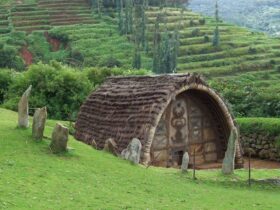

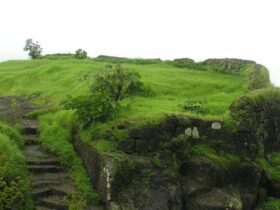
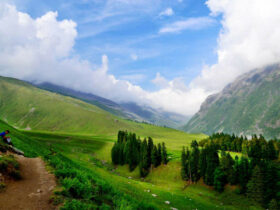
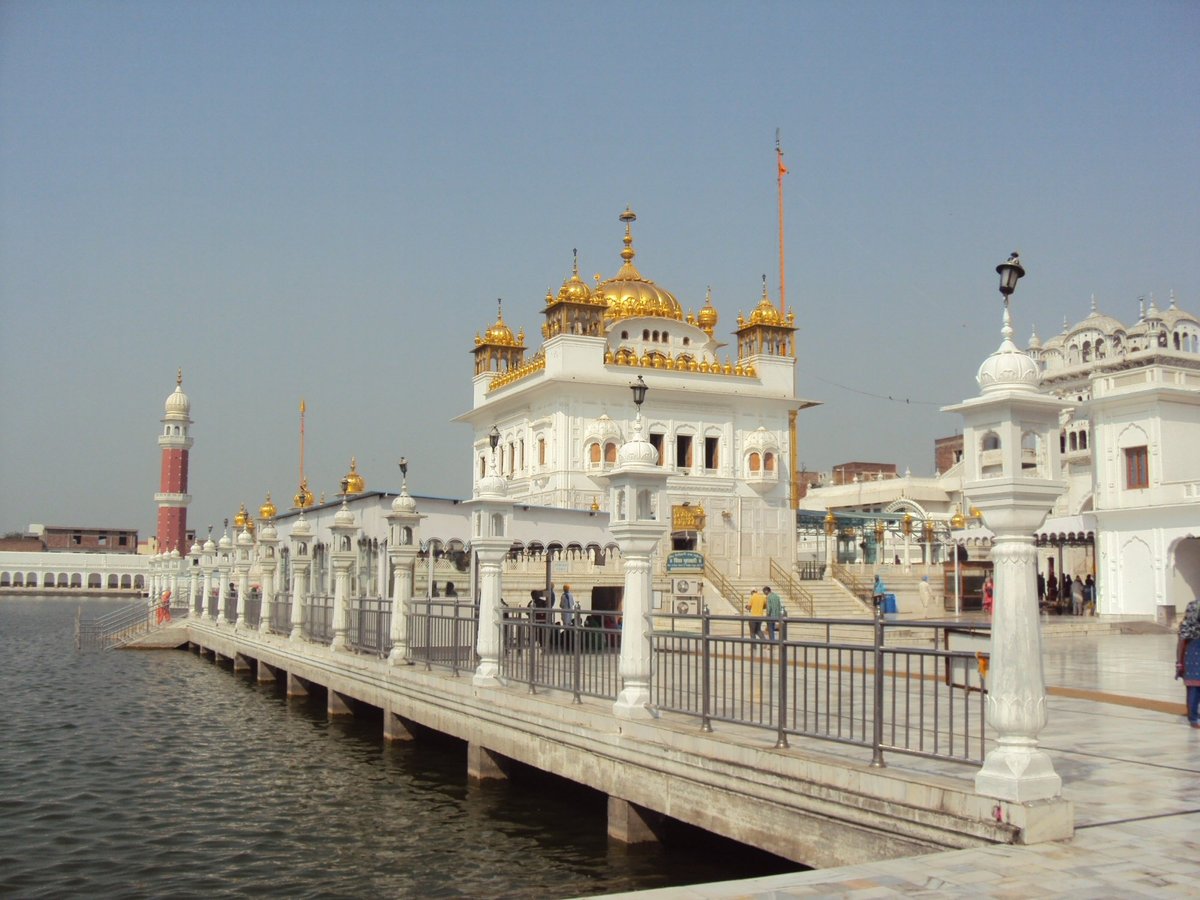
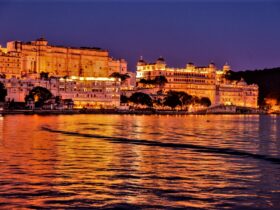

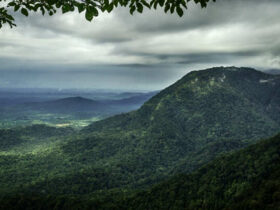

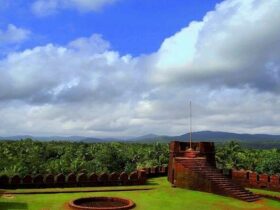
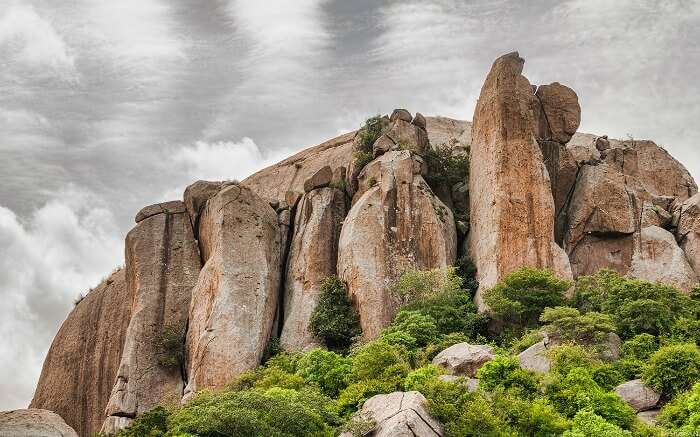
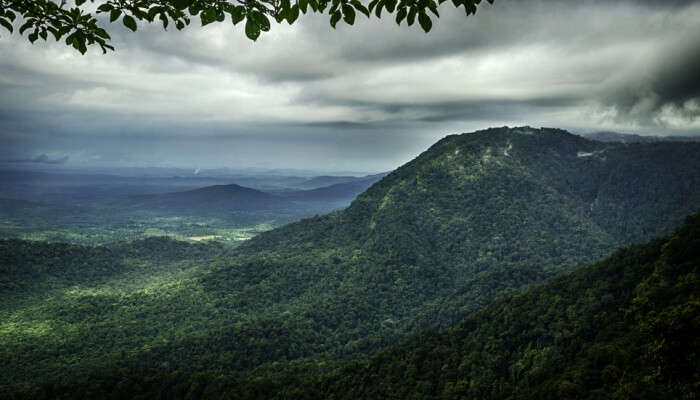
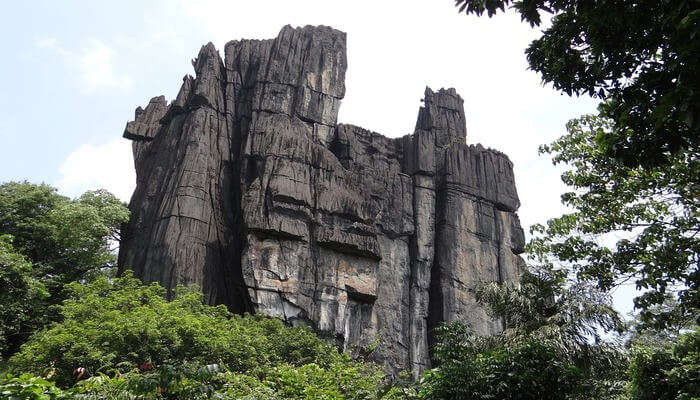
Leave a Reply
View Comments